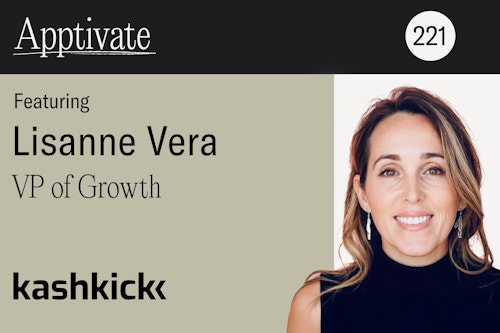How to create compelling creatives by offering a value exchange
June 22, 2021

This article was inspired by a recent episode from Remerge’s Apptivate podcast, featuring Megan Price, an executive media buyer at M&C Saatchi Performance. Megan is responsible for daily campaign optimizations, reporting, and insight generation for client calls and QBRs.
You can listen to episode 72 of the Apptivate podcast through this link.
There are no second chances for first impressions
First impressions matter. Creatives are the first touch point that brands have with their consumers and play a significant role in performance marketing. When running programmatic campaigns however, creatives are often overlooked as marketers have been focusing more on the data and optimization aspect of targeting. While ad testing may run occasionally, creatives need constant refreshing. One may have the best targeting strategy in the world, but performance will never be optimal without a distinctive and engaging creative in place.
The importance of having great creatives is further heightened in the wake of Apple’s iOS 14.5 deprecation of the user ID. In a no-ID world, creatives are at the forefront of the mobile marketing strategy once again. Now more than ever before, marketers need to drill down and assess the impact of different creatives on different ad formats, all while providing more value.
What makes an ad distinctive and engaging?
There’s no secret recipe for creating the perfect creative. If there were a sure way, then all performance marketers would have applied it by now and there wouldn’t be a need for testing. The definition of a good creative is one that’s ever-changing.
The increasing mobile device usage in 2019 was further accelerated by the coronavirus outbreak and lockdown, increasing mobile internet usage to 72% for millennials and 82% for Gen Z. Users from these groups are being exposed to more ads on the same channels, all on mobile.
Having different creatives is the best way to keep consumers engaged. Planning different creatives for display, in-app advertising, and other formats allows companies to showcase their brand in different ways. It’s important to prevent creative fatigue by switching things up (instead of showing the same banner again and again), because as soon as the fatigue hits, consumers stop listening and brands lose their attention.
Focus on the value exchange
Growing up with phones, internet platforms, and technology, consumers from the millenial and Gen Z generations are more demanding in the sense that they want value from the ads they’re exposed to. These users are habituated and exposed to all kinds of marketing, so they’re able to spot an ad right away and expect a value exchange.
The easiest way to provide value is by shifting from a passive to an active engagement. An example of a passive ad is a banner which users can view and click on, whereas an active ad could be a playable where the users can have fun with the ad in a light-hearted way until they’re ready to directly interact with the brand through an install or reengagement.
Other examples include carousels for e-commerce, delivery, or travel apps where users can swipe through the ad to view different products. Shoppable ad formats have also risen in popularity due to the pandemic, as consumers are spending more time on their phones. This format is often seen on Instagram, where consumers can view a product on an ad and shop directly from it. Shoppable formats significantly minimize purchasing friction, since half the steps that the consumer would need to make are removed. Users can simply click on the ad and shop on the same page within the same app immediately.
Spotify’s “Wrapped”
Outside of the creative formats mentioned above, marketers can also take inspiration from Spotify’s annual campaign. The yearly “Wrapped” is a feature that gives Spotify’s users statistics on their app usage. Users simply enter their credentials through an app or web link and are taken to an interactive landing page that shows them their top artists, most listened to songs and podcasts from the same year, allowing them to turn this discovery into their own personalized “wrapped playlist” of the year. This type of content marketing has become popular and is becoming a trend for digital-first brands. Large companies like TikTok, Apple Music, and Snapchat have followed suit.
This reinforces the idea of a value exchange, as brands were previously wary about letting audiences know how much user data they were collecting. Showcasing the data was considered harmful for the brand image, but now that it’s done in a fun way consumers are seeing the value, and are loving it.
Mobile phone users often move so quickly and execute a multitude of tasks between apps that they’re no longer aware of their own behavior. Spotify’s Wrapped achieved great success by taking the same information and providing significant value back to each user.
Online experiential marketing and everything digital
There are other ways of engaging customers beyond the forms of active adverts like playables and in-app shopping. In this industry, we’re seeing technological advances every year and experiential marketing is moving online. This way of marketing, that was traditionally done physically, is not currently possible.
Augmented Reality (AR) and Virtual Reality (VR) may finally experience a boom in 2021 and finding the next step in creating those immersive brand experiences will become more crucial. With the lack of targeting in the future, it’s important to offset that with an impactful creative strategy - one that can hit the nail on the head by creating active behavior.
These efforts will also help mobile marketers keep the aspect of contextual targeting. The wider type of creatives available, the better. Be it video, static, GIFs, playables, shoppables, etc., they’re all ways we can target users to get back to the app and have different data points to optimize.
The bottom line
Creatives have always played an important role in mobile marketing, but will have heightened importance in a new world without the user ID. By putting the focus on the value exchange in creative planning, conversion rates will follow.
Make a move from passive to active engagement to keep your ads distinctive, but be aware that one size doesn’t fit all. Try different things for different channels until you find the one that works best for your brand. Always remember, this could be your brand’s first touch point with someone who could be a long-term customer.
Get the latest app marketing insights
Join our newsletter





